Preventive Care
Establishing good nutritional habits for your child can be especially beneficial to promote good eating patterns and food choices for the rest of his or her life. Think of your child’s mouth as the doorway to the rest of the body. Whatever gets consumed not only affects your child's growth, development, weight, and energy levels, but oral health as well. Eating a nutritious, balanced diet is vital for the development of strong, healthy teeth.
General Tips for a Healthy Diet and a Healthy Mouth
- Limit your child’s consumption of sugary foods and beverages. When plaque combines with the sugars and starches, an acid is produced that attacks enamel on the teeth, and eventually causes decay.
- Encourage your child to drink through a staw cup rather than a sippy cup. When a child drinks through a sippy cup, it is immersing the front teeth in the liquid. Even if a child isn't drinking sweetened drinks, milk and juice still contain some sugar.
- Make sure your child’s diet includes a balance of fruits and vegetables, whole grains, protein, and dairy products. The nutrients found in these foods are important to his or her growth and health.
- Look for sugar in unexpected places. Many foods that make up a balanced, healthy diet contain sugar – including fruit, some vegetables, and milk. The best time to eat these is during meal time, not as a snack.
- Speaking of snacks, limit your child’s snacking to only a few per day, and make sure they’re nutritious!
- Fun foods, like candy and starchy snacks, should be reserved for special occasions, not everyday snacking.
- Sticky chewy foods and candies including but not limited to dried fruit, gummy bears, fruit snacks, fruit roll ups, laffy taffy, and tootsie rolls should be avoided as they get stuck in the deeper grooves and crevices of teeth and are hard to brush out. They can also peel off sealants once they have been applied.
- Ensure your child brushes twice a day and flosses to eliminate food debris that leads to harmful plaque and bacteria, and causes tooth decay.
Preventive dental care is important throughout life, especially at a young age. By practicing good oral hygiene at home and scheduling regular checkups with the dentist, your child can help keep her smile bright and healthy for many years to come. Here are a few simple ways to prevent the build-up of plaque and cavities:
- Make sure your child brushes her teeth at least twice a day with a soft-bristled toothbrush. Use fluoride toothpaste to remove food particles and plaque from the tooth surfaces. Also be sure she brushes the top surface of her tongue; this will remove any extra plaque-causing food particles and help keep her breath fresh!
- Make sure your child cleans between her teeth by flossing at least once a day. You can also use a mouthwash to help kill bacteria and freshen her breath. Decay-causing bacteria can linger between teeth where toothbrush bristles can't reach. Floss and mouthwash will help remove plaque and food particles from between the teeth and under the gum line.
- Make sure your child eats a balanced diet, and try to avoid extra-sugary treats. Nutritious foods such as raw vegetables, plain yogurt, cheese, or fruit can help keep your child's smile healthy.
- Remember to schedule regular checkups with your child's dentist every six months for a professional teeth cleaning.
- Ask your dentist about dental sealants, a protective plastic coating that can be applied to the chewing surfaces of the back teeth where decay often starts.
- If your child play sports, be sure to ask your dentist about special mouthguards designed to protect your child's smile.
When you have braces, it's very important to brush and floss after every meal in order to keep your teeth and gums healthy throughout your orthodontic treatment. If you need help choosing the right toothbrush, toothpaste, and dental floss, please ask us and we can help you choose the right products for your teeth and your appliance.
Brushing with Braces
Brush your teeth for two minutes after every meal with a soft-bristled, small-headed toothbrush and fluoride toothpaste. As an alternative, you can use a powered toothbrush to increase your brushing effectiveness. Brush the outside and inside surfaces of your teeth using small, gentle, circular motions while positioning the head of the toothbrush at a 45-degree angle to the gum line. Brush your teeth’s chewing surfaces and the inside surface of your front teeth using short, gentle, back-and-forth motions. Pay close attention to the areas around your brackets or other appliances.
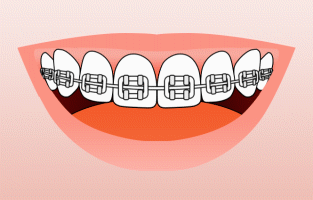
Flossing with Braces
Flossing after every meal will help keep your teeth and braces clean, which will also help keep your treatment time on track. To floss with braces, use a floss threader or special orthodontic floss to thread the floss behind each wire. Wrap the ends of the floss around your pointer fingers of both hands, leaving a few inches of taught floss between them. Gently slide the floss between each set of teeth using a back and forth motion. Floss the sides of each tooth beneath the gum line to remove plaque and food particles. Repeat this process until you’ve flossed all of your teeth. If you find that your floss is not removing all of the food particles between your teeth and around your braces, ask us about a water flosser!
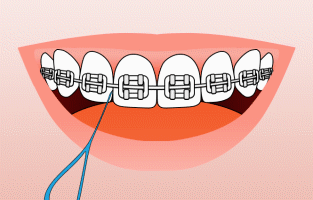
If it's been six months or more since your child's last dental checkup, then it's time to contact our practice and schedule an appointment!

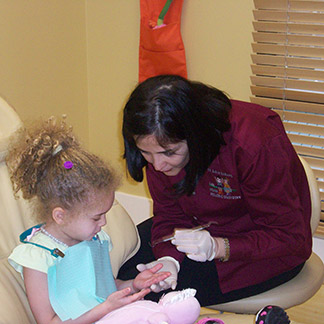
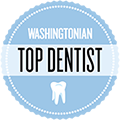

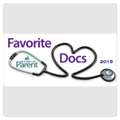



 Website Powered by Sesame 24-7™
Website Powered by Sesame 24-7™